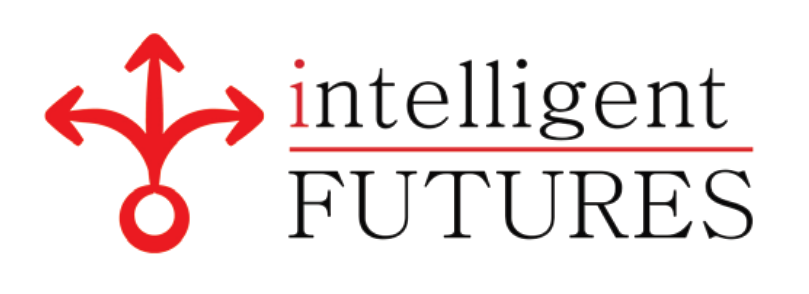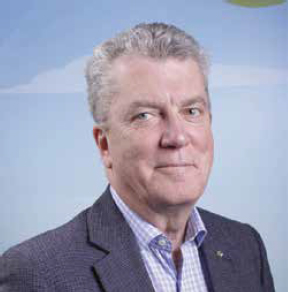An early 2019 survey of corporate leaders found 42% agreed that an ‘inability to act on signals crucial to the future of the business’ was one of the most common obstacles to innovation in large companies. Further analysis revealed that while 82% of the respondents had an awareness of potentially disruptive change, the core problem was acting on those signals. My own experience suggests few businesses have a formalised approach to connect ‘sensing’ and ‘responding’ in their strategic planning. This article discusses how businesses can build a ‘sense and respond’ capability using four key competencies.
The phrase ‘sense and respond’ has its roots in the 1980s concerning the control of manufacturing processes within industrial organisations. During the 1990s, ‘sense and respond’ evolved into a business concept with application beyond organisational boundaries to enable adaptation to a changing external environment. The concept was popularised in the 2017 eponymous book by Gothelp and Seiden, but their book had a strong operational flavour, focusing on Lean Practices for managing all work – not just technology work – for process and product innovation in a digital context. In contrast, I prefer to frame ‘sense and respond’ with a strong strategic flavour, focusing on strategy and business model innovation. Yet the underpinning assumption of sense and respond – successful organisations must listen to the market and innovate continually – is common to both approaches.
In my framework, sense and respond is an organisational capability comprising and reliant upon the orchestration of four key competencies. By ‘capability,’ I mean the wherewithal – usually in concert with other capabilities – to achieve organisational outcomes, such as growth and resilience. By ‘competency,’ I mean a distinctive blend of knowledge, skills and capacity using processes to create organisationally useful outputs, such as insights. The key benefit of an organisational ‘sense and respond’ capability is the creation of strategic agility to ensure the organisation can survive, perform and thrive in a changing operational environment.
For the remainder of this article, I want to focus on the four key competencies necessary to build an organisational ‘sense and respond’ capability: horizon scanning, scenario planning, warning intelligence, and future proofing. There is a value chain linking these competencies so that the output from one will provide the input for the next, culminating in tailored, effective, and timely action. These competencies are integrated and synchronised by social collaboration to stimulate sensemaking across the organisation. Let’s look at these key competencies in turn.
Horizon Scanning detects and makes sense of signals of change pertinent to your strategy, business and industry, to anticipate potentially important developments. As Proust said, ‘The real voyage of discovery consists not in seeking new landscapes, but in having new eyes.’ Signals of change can be early developments, persistent problems, risks and threats, including matters at the margins of current thinking that challenge business as usual assumptions. Horizon Scanning amplifies these weak signals to determine what is constant, what may change, and what is constantly changing in the time horizon under analysis, whether short-, medium- or long-term.
Scenario Planning contextualises the pertinent signals of change into scenarios that immerse you in alternate worlds and enable you to ‘think the unthinkable’ so that you can consider future possibilities today. Scenarios help focus thinking on the most important factors driving change in in the operational environment. By considering the complex interactions between these important factors, we can improve our understanding of how change works, and what we can do to guide it. Scenario Planning does not predict the future – rather, it helps us explore different ways the future might unfold, so that we may challenge our mental models to form a shared vision, develop strategies, and create high-impact plans to be implemented now in anticipation of future trajectories.
Warning Intelligence creates an awareness that prepares the mind to recognise early signs of significant change and trigger necessary action. ‘Fortune favours the prepared mind,’ cautioned Pasteur. Warning Intelligence is derived from systematic monitoring of scenario indicators to provide early warning of the emergence of a predicted scenario or related key developments in your operational environment. Warning Intelligence also assesses which of several possible future trajectories is beginning to evolve or whether activities or behaviours of key actors in our operational environment are consistent with an established pattern.
Future Proofing designs the necessary action – through design, rapid experimentation and prototyping – to mitigate the risks exposed by warning intelligence. The goal of Future Proofing is to create and protect shareholder and stakeholder value over the longer-term by acting effectively in the short-term. Future Proofing is a continual process – which should be embedded in strategy setting, strategy execution, and strategy management – intended to challenge foundational assumptions underpinning business success, and ongoing business model innovation to test potential futures before the business is ready for them.
As I mentioned earlier, the integrative component of a ‘sense and respond’ capability is social collaboration. At the core of social collaboration are strategic conversations enabled by regular, frequent meetings across the organisation, making sense of ‘reporting on today’ and ‘reporting on tomorrow’ to align the business with the nature and dynamics of change in the operational environment. These conversations embrace the insights from Horizon Scanning, Scenario Planning, Warning Intelligence, and Future Proofing to drive decisions at all levels to review priorities, launch new projects, add resources to promising ones, cut resources for others, and so forth.
The world is moving too fast to haphazardly and incrementally change our way into the future. In an increasing unintelligible world, the gap between aspiration and capacity cannot be closed by traditional modes of thinking and operating. As Gibson reportedly quipped, ‘The future is already here. It’s just not evenly distributed yet.’ So we need the coherence afforded by an organisational ‘sense and respond’ capability to move with strategic agility between ‘what is’ and ‘what can be.’

